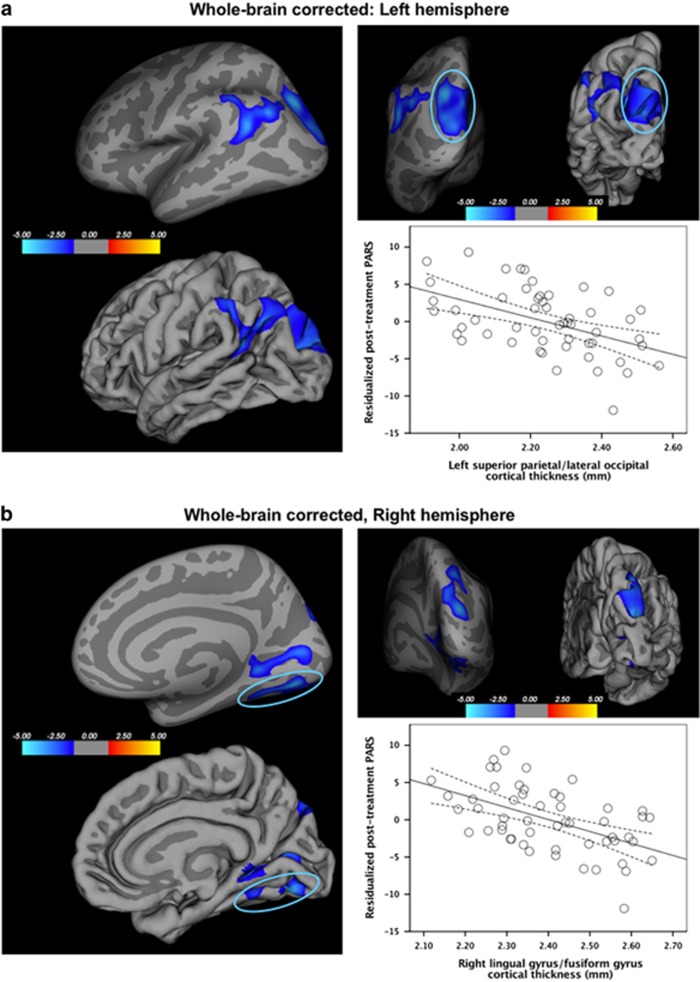Figure 3.
Associations of cortical thickness and anxiety treatment response. On the basis of the whole-brain vertex-wise correction (p<0.05, corrected), thinner cortex in five clusters in the parietal and occipital cortices was associated with worse anxiety treatment response, ie, higher continuous anxiety symptom ratings post treatment controlling for baseline. Results are shown on both the inflated and pial surfaces. In the left hemisphere (a), one cluster was in superior parietal cortex, spanning the lateral occipital cortex and cuneus (β=−0.49), and the other in inferior parietal cortex, extending to the supramarginal gyrus (β=−0.55). The scatterplot shows average cortical thickness of one of the clusters (ie, superior parietal/lateral occipital cortex) on the x axis and continuous treatment response (ie, post-treatment Pediatric Anxiety Rating Scale (PARS) scores, residualized for pre-treatment PARS scores) on the y axis. In the right hemisphere (b), two clusters emerged in the lingual gyrus, one extending to the fusiform gyrus (β=−0.52) and the other extending to the pericalcarine cortex (β=−0.52), and another cluster in the superior parietal cortex, extending to the lateral occipital cortex (β=−0.49). The scatterplot shows average cortical thickness of one of the clusters (ie, lingual gyrus/fusiform gyrus) on the x axis and continuous treatment response (ie, post-treatment PARS scores, residualized for pre-treatment PARS scores) on the y axis.

